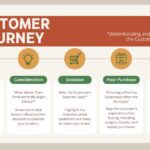Welcome to a world where brands shine brighter than ever before, captivating our attention with their innovative marketing strategies.
In this blog post, we will take a deep dive into the realm of brand marketing and explore captivating examples that have left an indelible mark on our minds.
From the heartwarming storytelling of Coca-Cola to the viral sensation created by Nike, we will unravel the secrets behind their success and discover the art of captivating an audience.
So, fasten your seatbelts and get ready to embark on an inspiring journey through some of the most engaging brand marketing examples that have set the stage on fire.
Are you ready to be amazed? Let’s dive in.

Table of Contents
ToggleWhat Are Some Successful Brand Marketing Campaigns?
#1. Coca-Cola’s “Share a Coke”
This campaign personalized Coca-Cola bottles with popular names, creating a sense of connection and encouraging people to share their experiences.
Its success stemmed from the emotional appeal of personalization, fostering a sense of individuality and sparking conversations.
#2. Nike’s “Just Do It”

This iconic slogan empowered athletes and non-athletes alike to push their limits and pursue their dreams.
Nike’s success lies in its ability to inspire and motivate individuals, transcending the boundaries of sport and becoming a cultural phenomenon.
#3. Apple’s “Get a Mac”
Through a series of humorous commercials featuring personified Mac and PC characters, Apple successfully positioned itself as the cooler, more user-friendly choice.
This campaign’s success can be attributed to its relatable characters and witty storytelling, making it memorable and creating a positive brand image.
#4. Old Spice’s “The Man Your Man Could Smell Like”
This humorous and over-the-top campaign rejuvenated the brand and targeted both men and women. The combination of a charismatic spokesperson, surreal scenarios, and a catchy jingle created a viral sensation, increasing brand awareness and sales.
#5. Dove’s “Real Beauty”
Dove’s campaign challenged traditional beauty standards by showcasing diverse women of all shapes, sizes, and ethnicities.
By embracing real beauty, Dove struck a chord with consumers, promoting self-acceptance and resonating with a broader audience.
#6. Airbnb’s “Belong Anywhere”
Through emotional storytelling and imagery, Airbnb tapped into the desire for unique travel experiences and a sense of belonging.
By emphasizing the human connection fostered through their platform, Airbnb successfully positioned itself as a transformative and community-driven brand.
#7. Red Bull’s “Stratos”

Red Bull sponsored Felix Baumgartner’s record-breaking skydive from the stratosphere, capturing the world’s attention.
This daring feat aligned with Red Bull’s brand identity of extreme sports and high energy, generating widespread publicity and reinforcing its image as a fearless and adventurous brand.
#8. Oreo’s “Dunk in the Dark”
During the 2013 Super Bowl blackout, Oreo seized the moment and tweeted “You can still dunk in the dark.”
This real-time marketing tactic garnered immense social media engagement, showcasing Oreo’s agility and sense of humor while capitalizing on a widely discussed event.
#9. McDonald’s “I’m Lovin’ It”
With its catchy jingle and simple message, McDonald’s successfully ingrained its brand in the minds of consumers.
The campaign’s success lies in its ability to create a lasting and memorable association between the jingle and the brand, reinforcing McDonald’s status as a fast-food icon.
#10. GoPro’s User-Generated Content
GoPro encouraged users to share their thrilling action-packed videos captured with their cameras.
By showcasing user-generated content, GoPro effectively leveraged its passionate community, inspiring others to seek out adventure and highlighting the quality of its products.
#11. Starbucks’ Holiday Cups

Starbucks’ annual release of holiday-themed cups creates anticipation and a sense of tradition among its customers.
This simple yet effective marketing tactic taps into the festive spirit, boosting sales and fostering brand loyalty.
#12. IKEA’s “Bookbook”
IKEA’s humorous video spoofing Apple’s product launches showcased their catalog as the “bookbook” – a revolutionary device for browsing furniture.
This clever campaign successfully stood out from traditional furniture advertising, emphasizing IKEA’s affordability, accessibility, and design.
#13. Google’s “Year in Search”
Google’s annual recap of the year’s most searched topics resonates with audiences by highlighting emotional and impactful moments.
This campaign not only demonstrates Google’s search capabilities but also taps into the collective consciousness, creating an emotional connection with its users.
#14. Airbnb’s “Live There”
By promoting authentic travel experiences, Airbnb encouraged users to immerse themselves in the local culture rather than being mere tourists.
This campaign focused on creating meaningful connections with people and places, distinguishing Airbnb as a platform that fosters genuine travel experiences.
#15. Doritos’ “Crash the Super Bowl”
Doritos invited consumers to create their own Super Bowl commercials, sparking creativity and engaging its audience.
This user-generated content campaign not only generated buzz but also gave consumers a sense of ownership, making them feel connected to the brand.
#16. Pepsi’s “Pepsi Challenge”

Pepsi’s blind taste test challenged consumers’ loyalty to Coca-Cola, positioning Pepsi as the superior choice.
This campaign’s success lies in its simplicity and the element of surprise, making consumers question their preferences and opening their minds to new possibilities.
#17. Volkswagen’s “The Force”
This heartwarming Super Bowl commercial featured a young boy dressed as Darth Vader who seemingly starts a Volkswagen with the power of the Force.
The ad resonated with audiences through its nostalgic reference to Star Wars and its relatable story of childhood imagination, leaving a lasting impression.
#18. Nike’s “Find Your Greatness”
This campaign celebrated the achievements of everyday athletes, shifting the focus from elite athletes to the average person’s pursuit of greatness. Nike’s success lies in its ability to inspire and empower individuals by highlighting their personal journeys and triumphs.
19. Burger King’s “The Whopper Detour”
Burger King offered customers a one-cent Whopper if they ordered it using the Burger King app while inside or near a McDonald’s.
This disruptive campaign leveraged technology and created a buzz around the brand, enticing customers to try Burger King and generating significant app downloads.
#20. Amazon’s “Prime Day”
Amazon’s annual Prime Day offers exclusive deals and discounts for its Prime members, creating a sense of excitement and urgency.
This campaign’s success stems from its ability to drive sales and boost membership while creating a shopping event comparable to Black Friday.
These successful brand marketing campaigns achieved their goals by employing various strategies such as emotional storytelling, humor, user-generated content, real-time marketing, and challenging traditional norms.
By capturing the attention of their target audiences and creating memorable experiences, these brands were able to forge lasting connections, increase brand awareness, and ultimately drive sales.
What Are Some Innovative Brand Marketing Strategies Used By Companies?
#1. Influencer Collaborations: Companies partner with popular social media influencers to promote their products or services to a large and engaged audience.
This strategy leverages the influencer’s credibility and reach, creating a personal connection with consumers.
#2. User-Generated Content: Brands encourage customers to create and share content featuring their products.
By tapping into the creativity and enthusiasm of their audience, companies generate authentic and relatable content while fostering a sense of community around their brand.
#3. Gamification: Brands incorporate game elements, such as challenges, rewards, and leaderboards, into their marketing campaigns.
Gamification adds an element of fun and engagement, motivating consumers to participate and interact with the brand.
#4. Augmented Reality (AR) Experiences: Companies utilize AR technology to create interactive and immersive experiences for their customers.
From virtual try-on features to interactive product demonstrations, AR enhances engagement and allows consumers to visualize products in unique ways.
#5. Personalization: Brands tailor their marketing messages and offerings to individual consumers based on their preferences, behaviors, or demographics.
Personalization creates a customized and relevant experience, fostering a deeper connection and increasing the likelihood of conversion.
#6. Cause Marketing: Companies align themselves with social or environmental causes, demonstrating their commitment to making a positive impact.
By associating their brand with a larger purpose, companies attract consumers who value socially responsible businesses.
#7. Storytelling: Brands create compelling narratives around their products or brand values, engaging consumers emotionally and leaving a lasting impression.
Storytelling humanizes the brand, resonates with the audience, and builds a loyal following.
#8. Experiential Marketing: Brands create memorable and immersive experiences for consumers, often through live events or pop-up activations.
These experiences allow consumers to interact directly with the brand, generating excitement, word-of-mouth, and social media buzz.
#9. Interactive Content: Brands use interactive content formats such as quizzes, polls, and surveys to engage and involve consumers.
Interactive content encourages participation, captures attention, and provides valuable insights about the audience.
#10. Collaborations and Limited Editions: Brands partner with other companies or designers to create limited-edition products or exclusive collections.
These collaborations generate hype, create a sense of exclusivity, and attract new customers who are drawn to the novelty and uniqueness of the offerings.
#11. Data-Driven Marketing: Brands leverage data and analytics to understand their audience’s preferences, behaviors, and buying patterns.
This data-driven approach allows companies to deliver targeted and personalized marketing messages, maximizing relevance and effectiveness.
#12. Emotional Branding: Brands focus on evoking specific emotions in their marketing campaigns to create a deep emotional connection with consumers.
By appealing to emotions such as joy, nostalgia, or empathy, brands forge strong bonds and establish a distinctive brand identity.
#13. Interactive Social Media Campaigns: Brands design interactive campaigns on social media platforms to encourage user participation, such as contests, challenges, or user-generated content competitions. These campaigns generate buzz, increase engagement, and expand brand reach.
#14. Targeted Influencer Marketing: Instead of partnering with macro influencers, brands collaborate with micro or nano influencers who have smaller but highly engaged niche audiences.
This strategy allows brands to reach a more targeted audience and establish a sense of authenticity and trust.
#15. Cross-Channel Marketing: Brands integrate their marketing efforts across multiple channels, such as social media, email, website, and offline advertising.
This cohesive approach ensures consistent messaging, wider brand exposure, and a seamless customer experience.
These innovative brand marketing strategies demonstrate the ability of companies to adapt to evolving consumer behaviors, technologies, and trends.
By embracing creativity, personalization, interactivity, and emotional connections, brands can effectively engage their audience and stand out in today’s competitive landscape.
Conclusion
In a world of fierce brand competition, captivating marketing strategies have proven their power. From Coca-Cola’s personalization to Nike’s empowering message, successful brands have left a lasting impact.
Emotional connection, storytelling, and user-generated content have been key. Innovations like influencer collaborations, gamification, and augmented reality engage consumers in new ways.
Thriving brand marketing goes beyond selling products; it forges connections, builds communities, and resonates with aspirations. Let’s be inspired by these examples, and embrace creativity, authenticity, and storytelling. Connect deeply with audiences, leave a lasting impression, and make your mark in brand marketing’s captivating realm. The world awaits your innovation.







